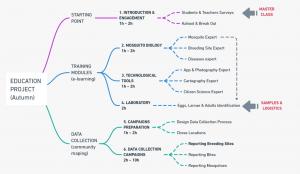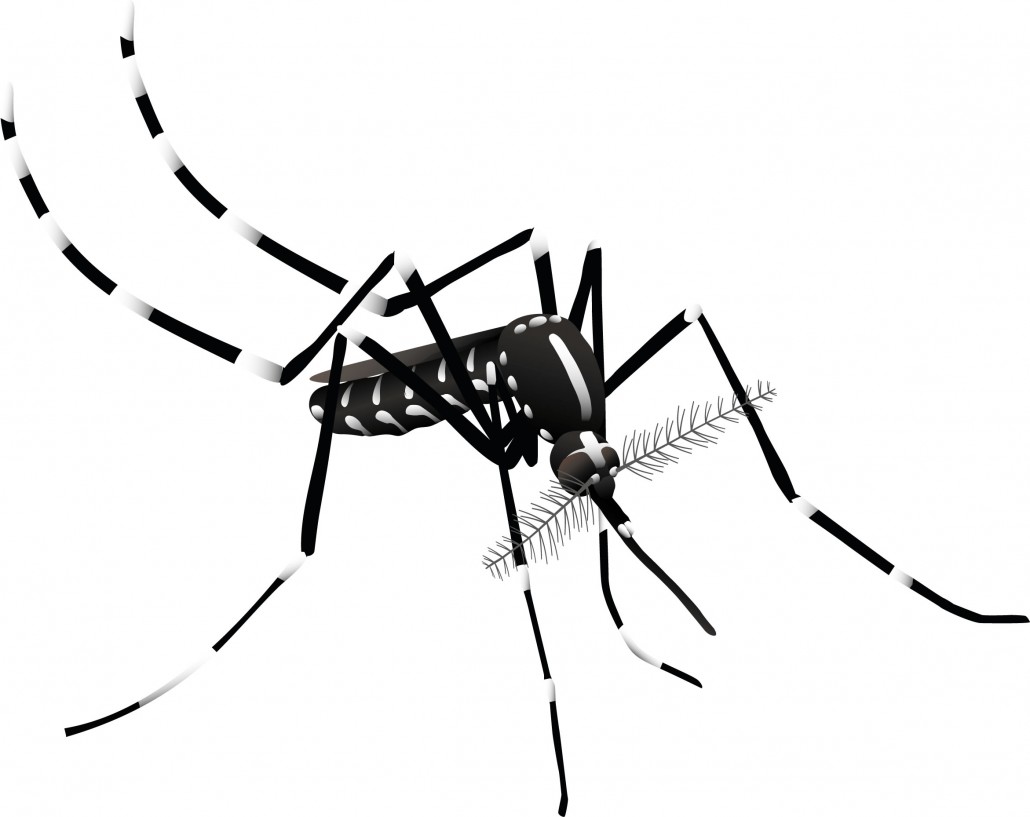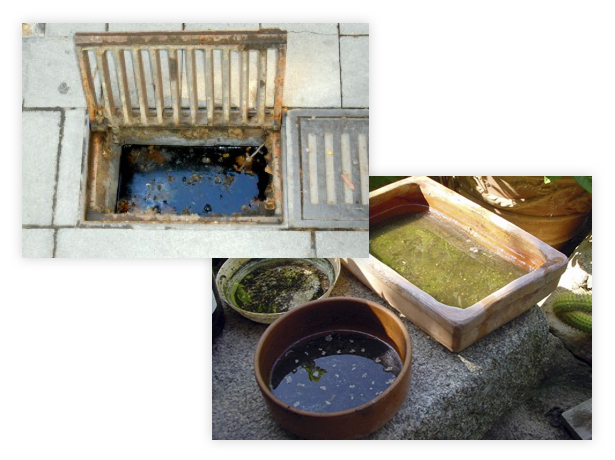WELCOME TO THE EDUCATION PROJECT
This webquest is meant for students in 3rd year and participating means being a part of the Mosquito Alert project. For this, you will be helping to control the spread of mosquitoes, which causes many public health problems.
In this 2021-2022 edition, we have joined forces, and Spanish and Dutch schools will participate. All this is thanks to the sponsors and collaborators of the projects that we have underway.
INITIAL SURVEYS
To start working, we need to know what you think of citizen science, mosquitoes and diseases.
Each student should complete this survey: Student Survey (form)
Each teacher should complete this survey: Teachers Survey (form)
FIRST STEPS
Hey teacher! Before starting this project, there are 10 key things about mosquitoes that your students should know. How do we check how prepared your students are?
With your class group, you must answer our initial questionnaire. To do so, we suggest that you play a game of Kahoot.
(Alternatively, you can also do it by looking at this Prezi)
HOW TO PARTICIPATE
The scientists and managers of this project work to control mosquito populations. Of the tasks that we do, there are some tasks that are done more efficiently and faster with the help of citizen scientists.
We invite you to become a citizen scientist, and you will have to learn many things, then collect data from the streets using your phones, and finally, you will analyse the data and solve your research question.
We recommend that you work in groups of 3 people. In most sessions, every member of the group will be an expert in different topics.

IMPORTANT: It will be very useful if you prepare one “project notebook” to write everything you think is necessary during your participation.
PROJECT STRUCTURE
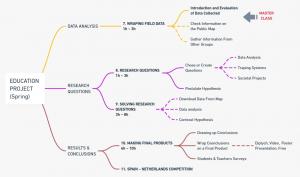
Before starting, we recommend that you browse the website a bit and that you pay special attention to the sections;
- Research questions: to know what kind of questions you should ask yourself
- Making final products: to know what deliverables we are going to ask from you
- Evaluation: to know the process by which you will be evaluated
PROJECT SUMMARY VIDEOS
To start getting into the project, we can start by looking at these videos:
BREAKOUT CHALLENGE
Here, we propose a challenge to see if you are clever enough.
Will you be able to guess the code that opens these boxes in just 10 minutes? If you are good at solving puzzles and working as a team, at the end of this session, you should be clear about the following:
- What is citizen science?
- What task do public health managers do?
- How does Mosquito Alert work?
In order to achieve these 3 key concepts before starting the project, we will have to play around a bit! We challenge you to overcome this Breakout! Prove what you are capable of!
Entomological training
To become citizen scientists, you have to learn what you are up against. Here, there are some links that will allow you to learn things about mosquitoes. There are also links about citizen science so that you understand how citizens can participate in a real scientific project.
If you have made groups of three, now is the time to distribute the tasks:
THE ADULT MOSQUITOES EXPERT AND ITS CONTROL
Take a look at these links and when you can answer all of these questions, you will be ready for the final test along with your classmates.
- 1. How can you differentiate between the 5 types of mosquitoes we are looking for? (Source: Mosquito Alert)
- 2.
- 3. Differences between female and male mosquitoes (Source: MosquitoNix)
- 4. Get to know the tiger mosquito better (Source: UNC-TV Science)
- 5. Things you should know about the tiger mosquito (Source: SOM)
- 6.
- 7. How and who do we notify of a pest? (Source: Mosquito Alert)
- 8. Mosquitoes, an urban pest. (Source: Madrid Salud)
- 9. Why are there no mosquitoes in winter? (Source: Mosquito Alert)
- 10. The tiger mosquito (Fuente: Biologia cotidiana)
- 11. Areas of action of a public health management program (Source: Mosquito Alert)
- 12. Aedes japonicus current situation (Source: RIVM)
THE EXPERT IN BREEDING POINTS AND THEIR CONTROL
Take a look at these links and when you can answer all of these questions, you will be ready for the final test along with your classmates.
- 1. Advertising spot on the breeding places (Source: DipSalut)
- 2. Spread of the tiger mosquito (Source: Mosquito Alert)
- 3. Biological cycle and prevention of the tiger mosquito (Source: DipSalut)
- 4. Learn more about the tiger mosquito (Source: DipSalut)
- 5. Know the breeding places of the tiger mosquito and how to treat them (Source: Mosquito Alert)
- 6. Infographic breeding places (Catalan and English) (Source: DipSalut)
- 7. Preventive measures against the tiger mosquito. (Source: Government of Aragon)
- 8. Why are there no mosquitoes in winter? (Source: Mosquito Alert)
THE EXPERT IN DISEASES AND BITES
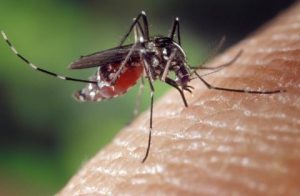
Take a look at these links and when you can answer all of these questions, you will be ready for the final test along with your classmates.
- 1. Preventive measures against the tiger mosquito (Source: Government of Aragon)
- 2. App to control the health of travelers (Source: One Health Travel)
- 3. What to do if we suspect that we may have one of the diseases transmitted by the tiger mosquito? (Source: ASPB)
- 4. How does a mosquito bite and transmit disease? (Source: USA Today)
- 5. How many times does a tiger mosquito bite? (Source: Mosquito Alert)
- 6. Why do mosquito bites itch? (Source: Mosquito Alert)
- 7. How do we prevent mosquitoes from biting us? (Source: Mnhealth)
- 8. The tiger mosquito (Source: Biologia Cotidiana)
PUT YOURSELF TO THE TEST – SESSION 2
Technological training: mastering the work tools
THE MOSQUITO ALERT APP AND PHOTOGRAPHY EXPERT
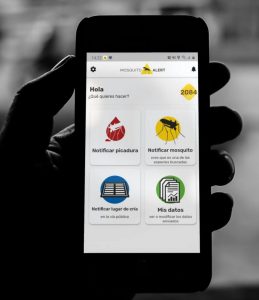
Take a look at these links and when you can answer all of these questions, you will be ready for the final test along with your classmates. In addition, you must download the application and analyze your options. You should also find out how its four main functions work with the help of the following links:
- Android Version and iOS Version download websites
- 1. Application Guide (Source: Mosquito Alert)
- 2. Information about the applicaiton (Source: Mosquito Alert)
- 3. What does the application allow us to do? (Source: Mosquito Alert)
- 4. Tips to make your photos useful (Source: XatakaFoto)
- 5. How to notify bites in the application (Source: Mosquito Alert)
- 6. Mosquito Alert Photographic Guide (Old App) (Source: Mosquito Alert)
- 7. Tips to get good pictures (Source: Mosquito Alert)
- 8. What do you have to keep in mind to upload a photo in the Mosquito Alert application? (Source: Mosquito Alert)
THE EXPERT IN CARTOGRAPHY AND DATA VALIDATION
Take a look at these links and when you can answer all of these questions, you will be ready for the final test along with your classmates. In addition, you must follow the following links to understand how all the project information is collected on a map. Finally, you will have to get a paper map of the area to be tracked and agree with the other groups which streets or areas each will do.
- 1. Explore the Mosquito Alert map and export data (Source: Mosquito Alert)
- 2. Red map of the invasion of the tiger mosquito (Source: La Vanguardia)
- 3. Map of Mosquito Alert (Source: Mosquito Alert)
- 4. What do I need to send a data? (Source: Mosquito Alert)
- 5. Validation process (Source: Mosquito Alert)
- 6. This is how Aedes Japonicus was discovered (Source: La voz de Asturias)
- 7. The art of catching mosquitoes
Get a paper map of the area that you will track and agree with the other groups which streets or areas are for them.
THE EXPERT IN CITIZEN SCIENCE

Take a look at these links and when you can answer all of these questions, you will be ready for the final test along with your classmates.
- 1. Concept of citizen science (Source: AulaBlanes)
- 2. Citizen Science Observatory (Source: Ciencia Ciudadana en España)
- 3. Platform of citizen science projects of Barcelona (Source: University of Barcelona)
- 4. Mosquito CitSci in The Netheralnds (Source: Muggenradar)
- 5. What is citizen science? (Source: Mosquito Alert)
- 6. Citizen Science (Source: Cultura científica)
- 7. Decalogue of citizen science (Source: Mosquito Alert)
- 8. Types of citizen science projects (Source: Wikipedia)
PUT YOURSELF TO THE TEST – SESSION 3
You must complete this form together (all three experts) to be considered fit after training.
Homework evaluation form
(The test is passed after 10 correct answers)
Let’s go to the laboratory!
In this session we will meet again! But this time in a special classroom: the laboratory. We will bring you samples so that you can learn about the life cycle stages of the tiger mosquito live and direct. You will have to show us your scientific side. Are you ready?
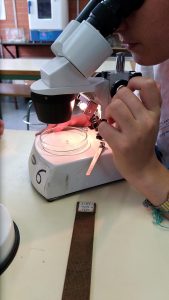
If you are participating in the online version of the project, here you will find the digital resources for the online version of the project.
SESSION 5 – Let’s get ready for the safari
You have completed both tasks! Congratulations. Now it’s time to prepare the field work.
We will focus on breeding sites because they’re easier to report than adults or bites. But if you see an adult or you are bitten, don’t forget to send the report.
Now more than ever, you need to cooperatively work:
- THE RECORD SHEET EXPERT is responsible for compiling the information on paper. Registration Sheet for Breeding Points
- THE APPLICATION EXPERT is in charge of entering all the information in the application and taking the photographs.
- THE TERRITORY EXPERT is responsible for writing down all the information on the paper map.
It is also time to distribute the areas that each group will sample. Analyze the maps well and make the necessary notes.
It is very important to be clear about what and how you should register the sinks and breeding points that you will find.
We also recommend that you choose what type of final product you want to make and how you will carry it out. Deciding now can help you complete the following tasks in a more targeted way.
Once you believe that you have shared everything that is necessary to carry out the field trip, you can fill out (with your group of 3) the following form and evaluate whether or not you are ready.
Calculate your score using the solution table (in the “evaluation” section).
We’re going on safari!
In this session, you will try to take a short walk around your institute with a single objective: to map all the potential breeding sites of the tiger mosquito in the area. You already have all the necessary tools, and you know everything you need to know, so you are ready to feel like a true health management technician.
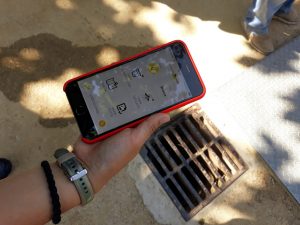
Family Surveys
You are already an expert on mosquitoes and how to prevent them, now find out what they know at home. Take the following survey of your family.
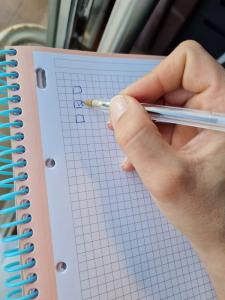
SESSION 7 – Safari Data Analysis
The next step is to analyze all this data set, and for everything to be clear, the first thing you need to do is complete the following form. Remember to do this with your group!
Cheer up, the end is near!
Research questions
Now that you have some knowledge and have seen the ways in which citizen science can collect different types of data, it is time for you to come up with one or more research question(s) and think about how you are going to solve it. We propose 3 different areas within which you can develop your questions.
Acquired knowledge:
- We know how digital tools work
- We have practical and theoretical knowledge
- We have field data available
- We have survey data
Proposed areas for questions:
- SCIENTIFIC (Data analysis) You can elaborate a question related to the collected data or to the data that is on the Mosquito Alert map. More information
- TECHNOLOGICAL (Trapping systems) You can elaborate a question related to the creation and/or use of traps to catch mosquitoes. More information.
- SOCIAL (Social aspects and opinions) You can elaborate a question related to what people know and think or carry out a communication campaign. More information.
Look carefully at each of the options you have to develop your scientific question. When you are clear about what your question will look like, complete the following document and upload it here.
- You will need to know what kind of question you are asking (scientific, researchable, …). Check this link carefully.
- It may take you some time to answer some questions, as you will need to plan your answers well among all the members of the group.
Solving cessary the questions!
Here your paths diverge!
Depending on the research question you have chosen, you will have to follow some steps or others.
What will be important for all of you is to:
- Organise a good roadmap of the tasks to be carried out.
- Divide the tasks well among the members of the group.
- Collaborate with other groups if possible or necessary.
- Be consistent and organised in your objective.
- Record the steps of your research or work in some way.
Once you have finished the process of solving your question, you have to make a poster to explain it:
- The research question
- The starting hypothesis
- The methodology used
- The results obtained
- The conclusions you have reached
- A brief discussion
Attention! Remember that in the tab “Examples of final products” you will find samples of posters produced by participants of previous editions as well as other products. You may find them inspiring.
You will also find a selection of resources that can help you in this task. We also recommend you to consult the rubric that will be used to evaluate your poster.
RESOURCES / HEADING
Once you have finished your poster, you must upload the file in zip format in this link.
Creation of material for the dissemination of the project
This first citizen science task is coming to an end. Now that you have actively participated in a scientific project, it is time to share it.
Phase 1: To analyse the work done together:
1- Review what steps you have followed since the first session.
2- Review the data you have collected and the research work you have carried out.
3- Think about the reasons why it is important for citizens to be informed about the project.
Phase 2: Each group must choose at least one final product and develop it. We remind you that you can find out how your products will be evaluated by consulting the corresponding rubric.
1. Process of participation in the project. It consists of explaining step by step everything you have done during your participation in this project. (Proposed format: presentation)
RESOURCES *It is suggested to use a modern and innovative format such as Genially, Prezi, etc.
HEADING
2. Dissemination of the project and explanation of the prevention measures against mosquitoes. It consists of explaining in a summarised way what Mosquito Alert consists of, as well as giving some advice on how to prevent mosquitoes. (Proposed format: video)
RESOURCES / HEADING
3. Characteristics of the life of mosquitoes in an informative entertainment format. Through simple games, you must explain curiosities about the life of the tiger mosquito or other mosquitoes. Too easy! You already know everything about this insects. (Proposed format: information leaflet)
RESOURCES / HEADING
4. Free product. If none of the previous proposals convinces you and you want to explain something else that you think is important, you should choose this product.
RUBRIC: There is no specific rubric, therefore the rubric of the previous products that best fits the product you make will be used.”
Attention! Remember that in the tab “Examples of final products” you will find samples of final products made by participants of previous editions. Maybe they will inspire you.
Phase 3: Once the final products have been made, you must upload them on the following link.
DEADLINE FOR SUBMITTING FINAL PRODUCTS: 10/06/2022
Dissemination of the final products
You’re almost done! Now that you have made your final products, you must show them to everyone. As you already know, one of the most important phases of this project is its dissemination. Therefore, as good citizen scientists, you must share and explain your products to whoever you want. You can exhibit it at home with your relatives, or in another course at your center… The more people who know it, the better!
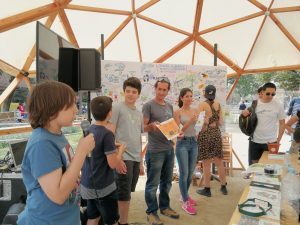
PROJECT EVALUATION
1- To evaluate the process we have:
– The two online forms with notes from sessions 2 and 3.
– The registration sheets and maps that you have used in session 6.
2- To assess the attitude of your group we have:
– This self-assessment survey for you to complete individually.
– This scoreboard to evaluate your safari preparation (session 5):

3- To evaluate results we have:
— The data set analyzed in session 7. – The rubrics of each final product designed in session 9. (Attention! Remember that the rubric is cumulative. That is, to get the maximum score for your final product, you must add all the criteria in the table.) To calculate the final result of your participation in the project, this table will be used.
FINAL SURVEY
To finish, we need to know what you think of citizen science after your participation.
FINAL PRODUCTS
Winners edition 2018/19

Prize category ‘ESO’: INS l’Alzina Grup “Sofia, Keila, Adam”
Prize category ‘Baccalaureate and formation cycles’: INS La Guineueta Grup “Ivan y Ainoa”
Prize category ‘Originality’: INS Josep Pla Grup “EVACONBATA”
PROCESS OF PARTICIPATION IN THE PROJECT

Prize category ‘ESO’: INS Valldemossa Grup “MIX”
Prize category ‘Baccalaureate and formation cycles’: INS Montserrat Grup “10”
Prize category ‘Originality’: INS Josep Pla Grup ” 100tifiks”
DISSEMINATION OF THE PROJECT AND EXPLANATION OF THE PREVENTION MEASURES AGAINST THE TIGER MOSQUITO

Prize category ‘ESO’: INS Narcís Monturiol Grup “10”
Prize category ‘Baccalaureate and formation cycles’: INS La Guineueta Grup “Ignacio, Guiu, Vama”
Prize category ‘Originality’: INS Narcís Monturiol Grup “9”
RESULTS OBTAINED FROM THE PROJECT

Prize category ‘ESO’: INS Valldemossa Grup “André, Biel i Dayana”
Prize category ‘Baccalaureate and formation cycles’: INS Josep Pla Grup “Mosquit MAM”
Prize category ‘Originality’: INS Josep Pla Grup “Campillos AMG”
Examples of previous editions:
DIPTYCHES / TRIPTYCHES
- IES Miralcamp (Castelló): 4t ESO – Grup 1: LINK
- IES Bosc de Montjuïc (Barcelona): ESO – Grup 1: LINK
- INS Antoni Torroja (Lleida): 3r ESO – Grup 1: LINK
- IES Bajo Cinca (Osca): 4t ESO – Grup “Carrizo de la Pampa”: LINK / 4t ESO – Grup “Chumbera”: LINK
- Colegio La Inmaculada (Terol): 3r ESO – Grup 1: LINK / 3r ESO – Grup 2: LINK / 3r ESO – Grup 3: LINK / 4t ESO – Grup 1: LINK / 4t ESO – Grup 2: LINK / 4t ESO – Grup 5: LINK
- IES Gúdar-Javalambre (Terol): 4t ESO – Grup “1PMAR”: LINK / 4t ESO – Grup “Poker”: LINK / 4t ESO – Grup “NIV”: LINK
- IES Sa Blanca Dona (Eivissa): 1r Batxillerat – Grup 1: LINK / 1r Batxillerat – Grup 2: LINK
- IES Santa Maria d’Eivissa (Eivissa): 4t ESO – Grup 4: LINK
- IES Jaume I Borriana (Castelló): 2n Batxillerat – Grup 1: LINK
SCIENTIFIC POSTERS
- INS Antoni Torroja (Lleida): 3r ESO – Grup 1: LINK
- IES Bajo Cinca (Osca): 4t ESO – Grup “Ailanto”: LINK / 4t ESO – Grup “Arce negundo”: LINK
- Colegio La Inmaculada (Terol): 1r ESO – Grup “Póster 1”: LINK / 1r ESO – Grup “Póster 2”: LINK / 1r ESO – Grup “Póster 3”: LINK
- IES Jaume I Borriana (Castelló): 2n Batxillerat – Grup 1: LINK
PREZIS
- IES Bajo Cinca (Osca): 4t ESO – Grup “Cotorra Argentina”: LINK
- IES Gúdar-Javalambre (Terol): ESO – Grup “LKS”: LINK
- IES Bosc de Montjuïc (Barcelona): ESO – Grup 1: LINK
INS Antoni Torroja (Lleida): 3r ESO – Grup 1: LINK / 3r ESO – Grup 2: LINK - IES Bajo Cinca (Osca): 4t ESO – Grup “Pita”: LINK / 4t ESO – Grup “Cotorra Argentina”: LINK
- IES Santa Maria d’Eivissa (Eivissa): 4t ESO – Grup “FMS”: LINK
- IES Miralcamp (Castelló): 4t ESO – Grup 2: LINK / 4t ESO – Grup 3: LINK
- Colegio La Inmaculada (Teruel): 2n ESO – Grup 1: LINK / 2n ESO – Grup 2: LINK / 4t ESO – Grup 3: LINK / 4t ESO – Grup 4: LINK / 2n ESO – Grup 3: LINK
- IES Sa Dona Blanca (Eivissa): 1r Batxillerat – Grup 1 : LINK
- IES Jaume I Borriana (Castelló): 2n Batxillerat – Grup 1: LINK
VIDEOS
- INS Antoni Torroja (Lleida): 3r ESO – Grup 1: LINK
- IES Bajo Cinca (Osca): 4t ESO – Grup “Cangrejo Rojo”: LINK / 4t ESO – Grup “Galápago de Florida”: LINK / 4t ESO – Grup “Siluro”: LINK
- IES Santa Maria d’Eivissa (Eivissa): 4t ESO – Grup “Los Pinkis”: LINK / 4t ESO – Grup “Los brous”: LINK
- Colegio La Inmaculada (Terol) 1r ESO – Grup “Mosquitas Power”: LINK / 1r ESO – Grup “Las 3 Mosquiteras”: LINK / 2n ESO – Grup “Los Mosquito Tigre”: LINK / 2n ESO – Grup 4: LINK / 3r ESO – Grup 4: LINK / 3r ESO – Grup 5: LINK / 4t ESO – Grup 2: LINK
- IES Gúdar-Javalambre (Terol): 4t ESO- Grup “abcdefghij”: LINK
- IES Sa Dona Blanca (Eivissa): 1r Batxillerat Grup 1 : LINK
- IES Jaume I Borriana (Castelló): 2n Batxillerat – Grup 1: LINK









